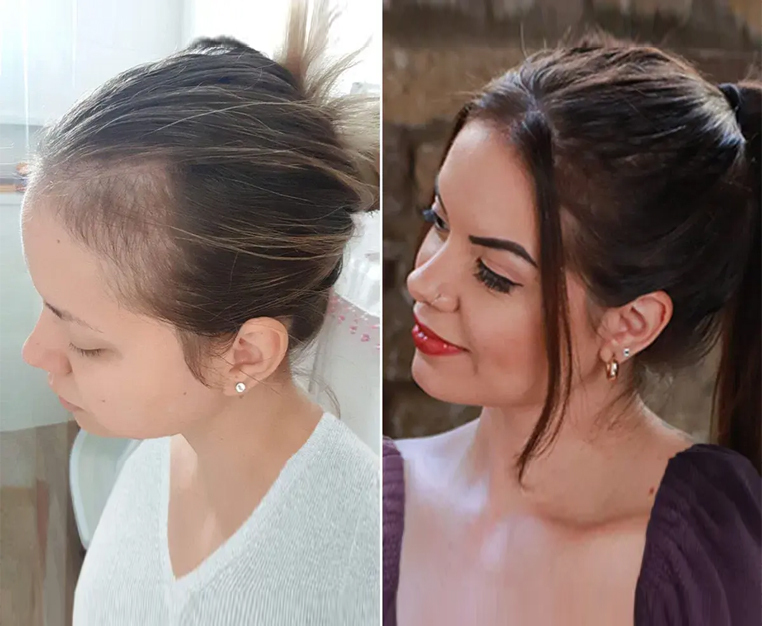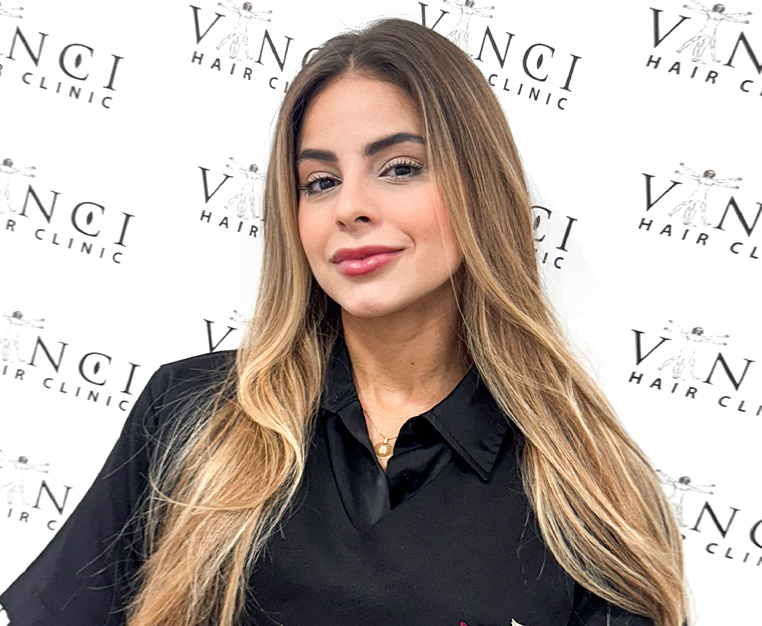Over-shampooing strips the scalp and hair of natural oils, forcing the sebaceous glands to produce more oil to rehydrate the scalp. However, too much oil can cause greasy hair. Some skin conditions like psoriasis and seborrheic dermatitis can also cause perpetually greasy hair.
To determine if you’re experiencing a skin condition that causes a greasy scalp, you should see a dermatologist as soon as possible. What if you don’t have any of these skin conditions, but you’re still suffering from a greasy scalp? Fortunately, there are ways of training your hair to become less greasy.
Causes Of Greasy Hair
Many factors can cause excessive oil production on your scalp. Sometimes, it is a combination of the factors outlined below. So, here are the most common causes of greasy hair.
Product Build-Up And Stress
Oil or silicone-based products cause the scalp and hair to look greasy. This is particularly the case if you layer the products or apply too much without properly removing the products you’ve used the previous day.
These products can create a coating around your hair strands. The coating forms a barrier around the hair and scalp that is resistant to air and water and which blocks the sebum. When this happens, the oils sitting on top of the coating can’t penetrate your hair, making your locks feel and look extra greasy.
Aside from product build-up, using dirty styling tools and brushes can also trigger excessive oil production. Always use clean styling tools, brushes and combs to reduce contact with oily substances.
Touching Your Hair Too Often
Rubbing your scalp or touching your hair too often may also cause excessive oil production. When you run your hand through your locks, you are moving the oils around your tresses. Wearing hats can also increase greasiness on your scalp, as the headgear traps the oils that the scalp produces. On top of that, it pushes your locks toward your scalp.
Additionally, incorrect application of hair styling products can make the scalp and hair greasier since these products have emollients. So, avoid oils, waxes and creams if possible.
How To Train Your Hair
While some hair types are prone to grease build-up, but there’s no need to worry because your hair can still take on a natural sheen. Here’s what you can do to train your scalp and hair back to normal.
Shampoo Sparingly And Eat More Greens
Overwashing your hair is not good for your scalp as it can make your hair greasier. You should wash and shampoo your hair no more than twice a week.
You don’t need to make significant changes right away. Try shampooing your hair three times a week and then twice a week once you’re used to it. Then when you’re ready, you can try shampooing just once a week.
Oily foods can also make your scalp and hair greasy. Vegetables, fruit and water can help improve things. Eating vitamin B6 and B2-rich foods like kale, kelp and spinach can help reduce sebum production.
Know What Products To Avoid And Use
Choose a conditioner with moisturising properties. A clarifying shampoo can also help wash away any stuff that’s clinging to your hair. Since these products are powerful, you should only use them twice a week. If you prefer traditional shampoos, it’s essential to avoid products that weigh the hair down. Go for shampoos that look translucent instead of creamy, and avoid those that contain silicon, proteins and oils.
Dry shampoo can also help train your hair to become less greasy. If your locks are starting to look buttery, applying dry shampoo can help you get rid of that oily sheen. Moreover, it can help you put off shampooing your locks a bit longer.
In addition, water temperature can affect the greasiness and health of your locks. It’s best to use warm water to open the hair cuticles, then switch to cold water to close them again. A paddle brush with boar bristles can help distribute the oils to your hair.
Treat Your Hair With Natural Products
Apple cider vinegar (ACV) can remove grease from your locks. Add three tablespoons of ACV to one cup of water, then apply the solution to your scalp and hair. Allow your scalp to absorb the solution for five to ten minutes, then rinse with water.
You can also use baking soda. Add two tablespoons of baking soda to one-quarter cup of water, then apply the solution to wet hair. Allow your scalp to absorb the solution for five to ten minutes, then rinse with cold water.
Do this once or twice weekly for the best results. Sea salt also absorbs sebum and makes it easier to style your hair between washes.
These products are natural and are usually to be found in your kitchen cupboard.
Conclusion
Greasy hair is challenging to style and maintain, but you can train your locks to become less oily. Follow the tips above and you will be able to train your hair back to normal. If you don’t see any results, then it may be time to see your dermatologist.
Vinci Hair Clinic can help you find answers to various hair problems. Book your free, no-obligation hair and scalp assessment consultation with us today!


